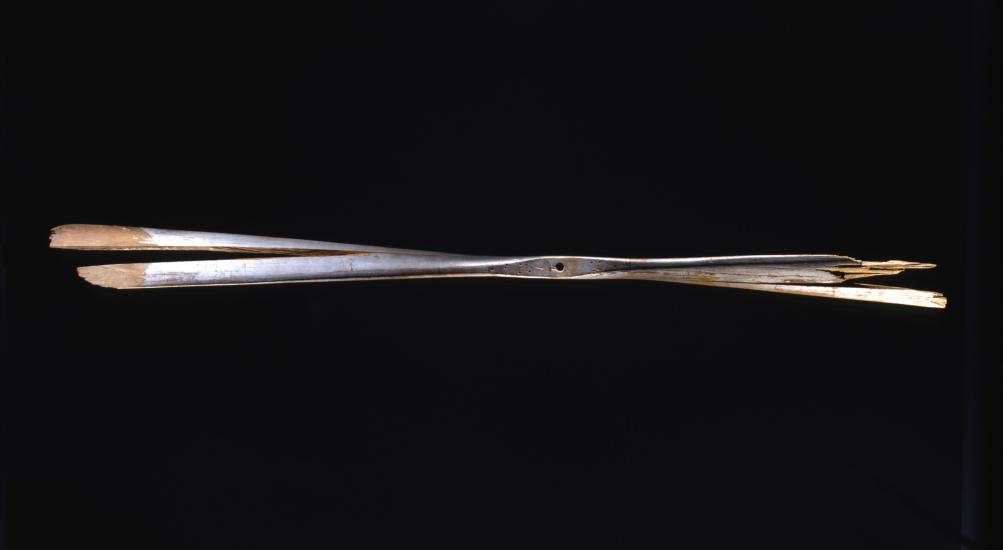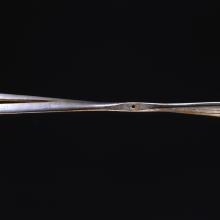-
The Wright brothers designed and constructed the world's first practical fixed-pitch propeller and developed the aerodynamic theory to calculate its performance during the process of creating their historic 1903 Flyer. Conceptualizing the propeller as a rotating, twisted wing moving in a helical path, the brothers used airfoil data obtained from their wind tunnel to design blades able to convert power from their small engine into thrust.
Believing that "the propeller should in every case be designed to meet the particular conditions of the machine to which it is applied," the Wrights designed their propellers (they used two on the airplane) for one specific performance regime. Using a drawknife and hatchets, they shaped the propellers from two laminated pieces of spruce, covered the tips with linen, and sealed them with aluminum powder suspended in varnish. Overall, these two propellers produced 66 percent efficiency, enough to get off the ground at Kitty Hawk.
This original propeller was used on the 1903 Wright Flyer on December 17, 1903, during its first flight.
Photographer:
Eric LongID#:
NASM-A19830381000-2002-19525Credit:
Photo by Eric Long, Smithsonian National Air and Space Museum (2002-19525)Source:
National Air and Space Museum Archives, Smithsonian InstitutionCopyright/Owner:
Smithsonian InstitutionRights Usage:
CC0 (Open Access)Terms of Use:
Smithsonian Terms of UseFor print or commercial use please see permissions information.

